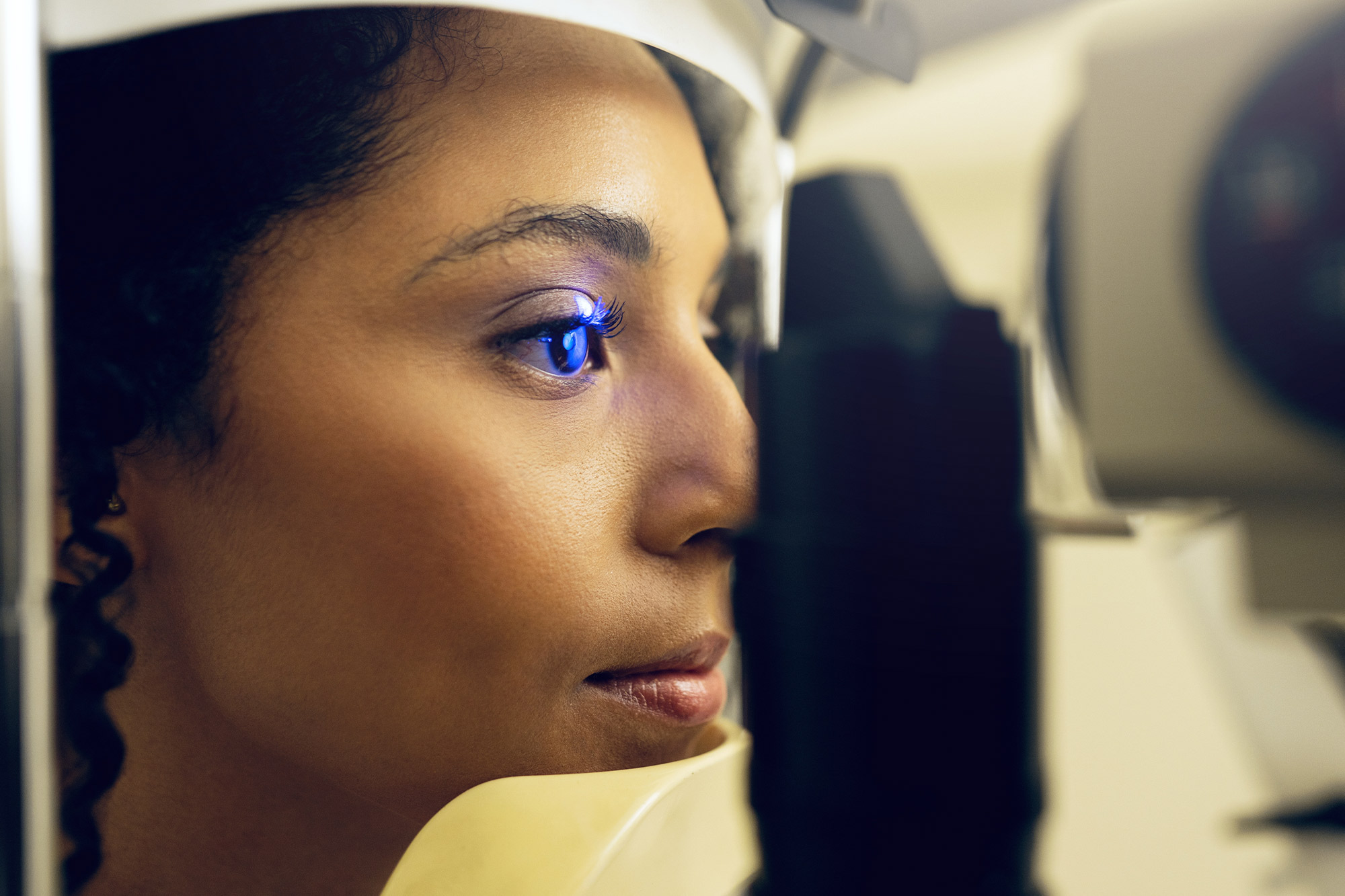


Diabetes is a systemic condition, meaning it affects all parts of the body. This is especially relevant for eye health, with the term “diabetic eye disease” being used as an umbrella term to describe the various risks.
The most common issues that link diabetes and eye health are:
- Diabetic retinopathy.
- Diabetic macular edema.
- Glaucoma.
- Cataracts.
This is because the eye is highly susceptible to high levels of glucose (sugar) in the bloodstream. It’s also the only body location that allows non-invasive monitoring of what is happening at a cellular level. In similarity to many health conditions, the earliest changes of all forms of diabetic eye disease can be picked up here. This makes it essential that both type I and type II diabetics require careful monitoring from a suitably experienced eye doctor to promote the best lifelong eye health.
The Importance of Eye Exams for Diabetics
The condition that most people think of when talking about diabetic eye disease is diabetic retinopathy. This is when high blood glucose causes the tiny blood vessels at the back of the eye to swell and leak. New, abnormal vessels can also form, which are even more prone to leakage.
This occurs over time as a result of persistently high sugar levels. There are different stages of the disease:
- Mild: Bulges, or microaneurysms (MAs), are spotted in the blood vessels. This stage only requires monitoring and lifestyle/medication steps to keep blood sugar within normal levels.
- Moderate: At least one MA has begun to leak. More aggressive treatment may be needed, as well as increased monitoring frequency.
- Severe: Also called “pre-proliferative retinopathy”. Multiple MAs are leaking across the entire retina. Steps must be taken to prevent the condition from worsening. This might involve different/increased medication, surgical procedures, and significant lifestyle alterations.
- Proliferative: New blood vessels form in the retina, scar tissue forms, with potentially some vision loss. Further medical interventions are required, including injections into the eye and other surgeries.
People are usually asymptomatic during the earlier stages of the disease, which is why eye exams for diabetics are so crucial. The American Optometric Association states that:
- Patients with type 1 diabetes should have a comprehensive dilated eye examination within 5 years of disease onset.
- Patients with type 2 diabetes should receive a comprehensive dilated eye examination at the time of diagnosis and yearly thereafter.
- Women who were previously diagnosed with type 1 or 2 diabetes should have a comprehensive dilated eye examination before becoming pregnant or within the first trimester.
But it’s not just the diabetic retinopathy risk. These eye examinations will be looking for other eye diseases that are more prevalent in diabetics.
Diabetic macular edema is where fluid builds up in the macula, which is the part of the eye responsible for central vision. Early symptoms include blurred vision and faded colors, evolving into more serious ones, like straight lines appearing wavy, blank areas in vision, difficulty recognizing faces, and more.
Both glaucoma and early onset of cataracts are also more common if you have diabetes. There is also the increased risk of other issues, such as retinal detachment.
The upshot of these conditions is that they are all sight-threatening. Thankfully, advanced diabetic eye screening plays a key role in:
- a) diagnosing the conditions at the earliest stages,
- b) monitoring as they evolve, and
- c) carrying out treatment that can slow or even halt their progression.
Once again, it can’t be stressed how important regular eye exams are for diabetics. This, in combination with regular blood sugar monitoring, adhering to any prescribed medication, and—crucially—taking effective lifestyle steps to control your blood glucose levels is essential for preserving your best lifelong vision. A diabetic eye check isn’t just a regular eye examination. It involves many additional techniques, including using drops to dilate the pupil and, potentially, a special test, known as an “optical coherence tomography” or OCT.
But it’s not all doom and gloom. Technology allows specialist diabetic eye doctors to diagnose conditions at a very early stage, plus today’s treatments have pushed the boundaries in what can be done and how effective they are.
The West Boca Eye Center is an academic-grade facility offering world-leading diabetic eye health care. Discover more at https://www.westbocaeyecenter.com/ and call today to book a consultation.
Diabetes is a systemic condition, meaning it affects all parts of the body. This is especially relevant for eye health, with the term “diabetic eye disease” being used as an umbrella term to describe the various risks.
Book an appointment
Fill out the form below and our staff will reach out to you quickly to fully book your appointment and receive all of your necessary information.
Specializing in modern cataract surgery.
Located 1/2 miles North of West Boca Medical Center on Glades Road, directly behind Macy's Furniture Gallery.
West Boca Eye Center
9325 Glades Road, Suite 201.
Boca Raton, FL 33434


